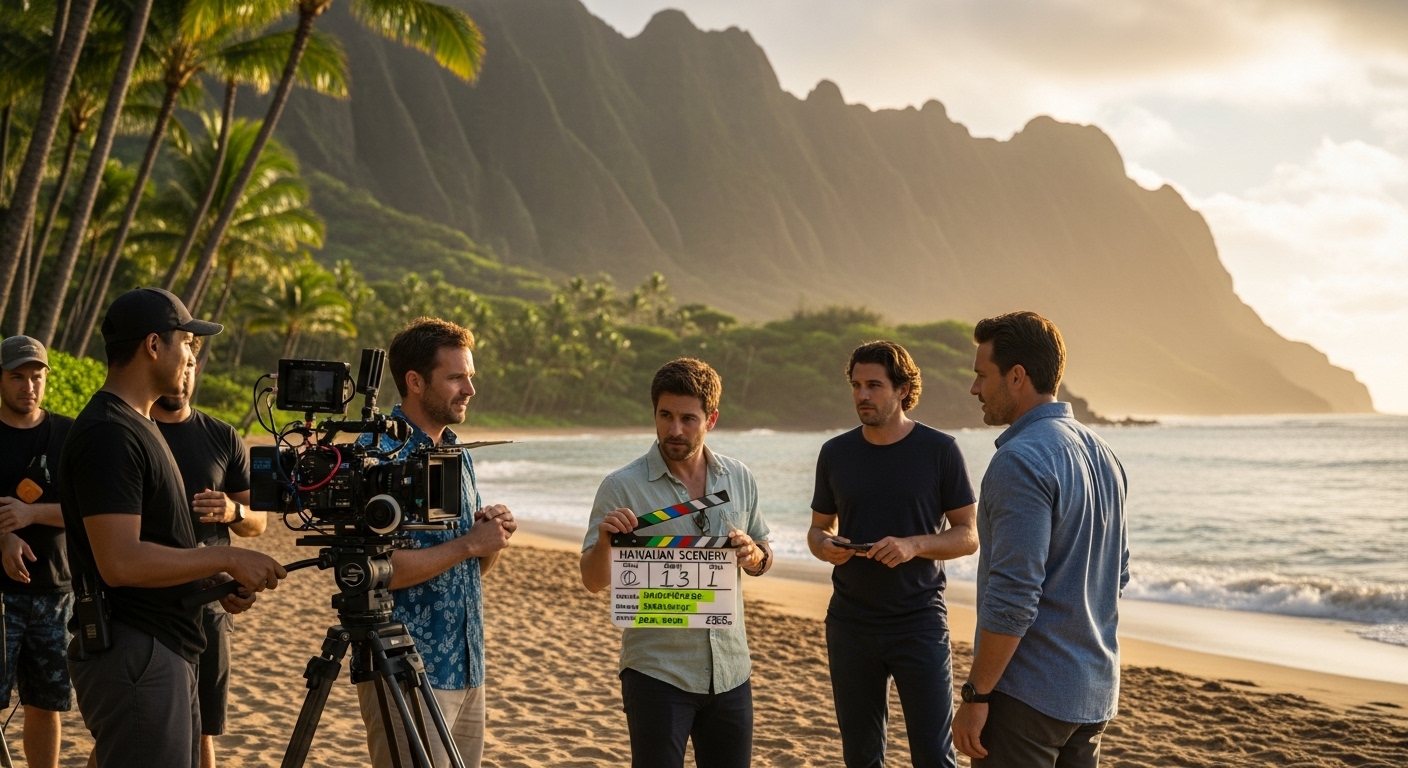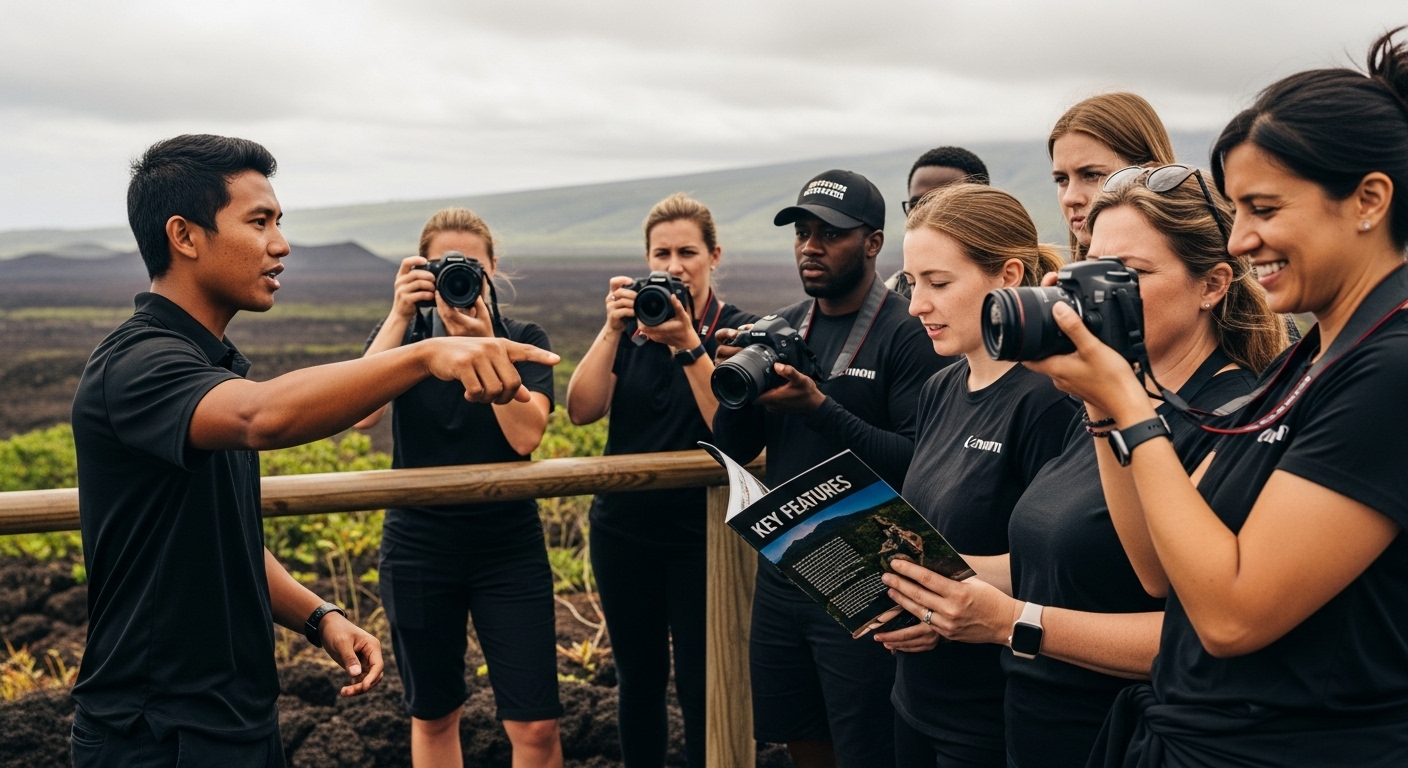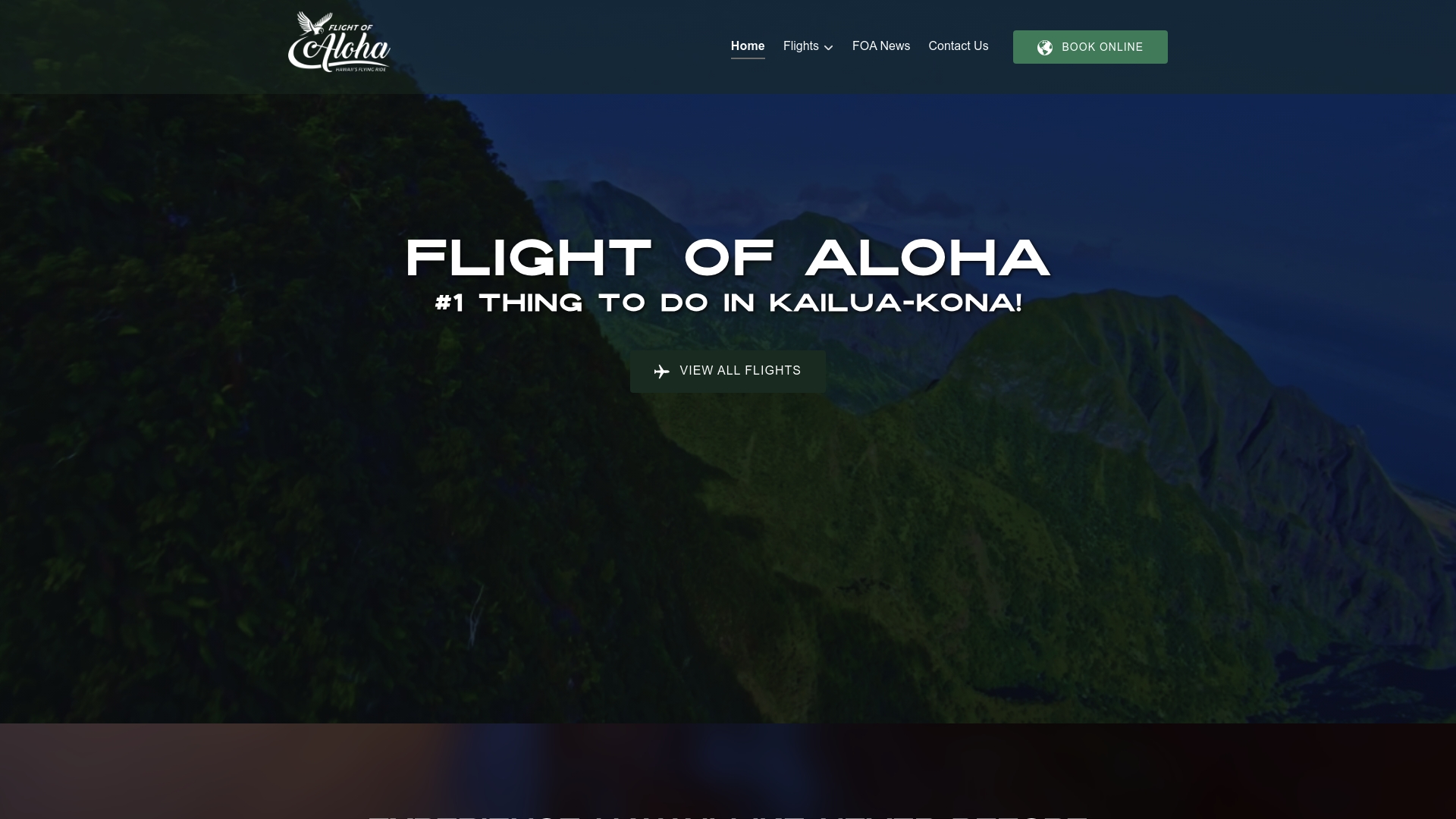Understanding Hawaiian Scenery in Entertainment

Hawaiian scenery has become a powerful force in movies, television, and immersive attractions, shaping how we see both paradise and cultural stories. It is easy to think these landscapes are just beautiful backgrounds, but that barely scratches the surface. Hawaii’s natural wonders draw millions of tourists annually and generate billions in revenue, yet their deeper impact lies in the way they carry generations of stories, spiritual meaning, and environmental lessons—making every volcano, beach, and forest a living chapter of both culture and imagination.
Table of Contents
- What Is Hawaiian Scenery In Entertainment?
- Why Hawaiian Scenery Matters To Culture And Tourism
- Key Features Of Hawaiian Landscapes In Media
- How Hawaiian Scenery Influences Storytelling And Themes
Quick Summary
| Takeaway | Explanation |
|---|---|
| Hawaiian scenery enhances storytelling. | The landscapes act as narrative tools, evoking emotions and cultural meanings within various media. |
| Landscapes represent cultural identities. | Hawaiian scenery embodies the spiritual connections and histories of Native Hawaiians, serving as vital cultural symbols. |
| Tourism relies on natural attractions. | Scenic beauty is a key marketing element, drawing millions and significantly contributing to Hawaii’s economy. |
| Visual representation aids environmental awareness. | Showcase unique ecosystems to educate audiences about biodiversity and climate change impacts through storytelling. |
| Geological diversity enriches narratives. | Volcanic terrain and lush environments offer compelling backdrops, representing themes of transformation, resilience, and ecological relationships. |
What is Hawaiian Scenery in Entertainment?
Hawaiian scenery in entertainment represents a powerful visual narrative that transforms geographical landscapes into immersive storytelling experiences across multiple media platforms. This unique representation goes beyond simple background imagery, serving as a critical cultural and aesthetic element that communicates the rich visual heritage of the Hawaiian Islands.
Visual Storytelling Through Landscape
In entertainment, Hawaiian scenery operates as more than just a picturesque backdrop. According to research from JSTOR, these landscapes function as complex narrative devices that evoke emotional responses, construct cultural perceptions, and communicate intricate stories about place, identity, and environmental beauty. The volcanic mountains, lush rainforests, pristine beaches, and dramatic coastlines become active participants in storytelling, not merely passive settings.
Cultural Representation and Visual Dynamics
Entertainment media utilizes Hawaiian scenery through several distinctive approaches:
- Exotic Paradise Narrative: Portraying Hawaii as an idyllic, untouched tropical paradise with breathtaking natural beauty
- Indigenous Cultural Context: Representing landscapes as integral to Native Hawaiian cultural narratives and spiritual connections
- Environmental Storytelling: Using geographical features to underscore ecological themes and environmental preservation
These visual representations extend across film, television, documentaries, and immersive attractions like our Hawaiian flying theater experience, each medium offering unique interpretations of Hawaiian geographical landscapes.
To clarify the distinctive approaches used in entertainment media to depict Hawaiian scenery, the following table compares each approach with its primary focus and narrative purpose.
| Approach | Primary Focus | Narrative Purpose |
|---|---|---|
| Exotic Paradise Narrative | Idyllic, breathtaking natural beauty | Attracts audiences by highlighting visual allure |
| Indigenous Cultural Context | Native Hawaiian cultural connections | Represents spiritual and ancestral significance |
| Environmental Storytelling | Ecological themes and preservation | Communicates environmental lessons and awareness |
Psychological and Emotional Impact
Hawaiian scenery in entertainment transcends mere visual documentation. It creates psychological landscapes that transport viewers, engaging their imagination and emotional responses. The scenery becomes a character itself—communicating stories of resilience, natural wonder, and cultural depth through its visual language. Whether depicting sweeping volcanic panoramas or intimate coastal ecosystems, these representations invite audiences to experience Hawaii not just as a location, but as a living, breathing narrative environment.
Why Hawaiian Scenery Matters to Culture and Tourism
Hawaiian scenery represents far more than a picturesque destination. It embodies a profound cultural narrative that interweaves environmental beauty, indigenous heritage, and economic significance. Understanding its deeper importance reveals how landscapes transcend mere visual appeal to become powerful symbols of identity and economic sustainability.
Cultural Preservation and Representation
For Native Hawaiians, landscapes are living entities that carry generational stories, spiritual connections, and ancestral memories. Research from Hawai’i Pacific University highlights how geographical features are not just physical spaces but integral components of cultural preservation. Mountains, coastlines, and volcanic terrains serve as historical archives, communicating complex narratives about indigenous experiences, traditional ecological knowledge, and spiritual practices.
Economic and Tourism Significance
Hawaiian scenery drives substantial economic activity through tourism and entertainment. The landscapes function as critical attractions that draw millions of visitors annually. Key economic impacts include:
- Destination Marketing: Scenic landscapes are primary marketing tools for attracting international tourists
- Entertainment Industry: Serving as breathtaking backdrops for films, documentaries, and media productions
- Cultural Tourism: Offering immersive experiences that connect visitors with indigenous narratives and environmental heritage
These landscapes generate billions in revenue while simultaneously promoting cultural understanding and environmental appreciation.
![]() Learn more about Hawaiian cultural attractions in our detailed guide.
Learn more about Hawaiian cultural attractions in our detailed guide.
Environmental and Global Significance
Beyond cultural and economic dimensions, Hawaiian scenery plays a critical role in global environmental awareness. The unique ecosystems represented in these landscapes showcase extraordinary biodiversity, demonstrate climate change impacts, and serve as living laboratories for ecological research. By presenting these environments through entertainment and tourism, Hawaiian scenery educates global audiences about environmental conservation, indigenous sustainability practices, and the intricate relationships between human communities and natural landscapes.
Key Features of Hawaiian Landscapes in Media
Hawaiian landscapes in media represent a complex visual language that transcends simple geographical representation. These environments serve as powerful storytelling tools that communicate cultural depth, environmental complexity, and narrative symbolism through their unique geographical and ecological characteristics.
Geological and Topographical Diversity
According to research from the U.S. Geological Survey, Hawaiian landscapes are distinguished by extraordinary geological features that create visually compelling media narratives. Volcanic terrains, ranging from active lava fields to dormant crater landscapes, provide dramatic backdrops that symbolize transformation, resilience, and dynamic environmental processes. The islands showcase a remarkable spectrum of landscapes—from barren volcanic rocks to lush rainforests—enabling media creators to craft narratives that explore themes of creation, destruction, and regeneration.
Ecological and Botanical Representation
Hawaiian media landscapes highlight unique ecological characteristics that set them apart from other global environments:
- Endemic Biodiversity: Showcasing plant and animal species found nowhere else on Earth
- Microclimatic Variations: Presenting dramatic environmental transitions within short geographical distances
- Ecosystem Complexity: Revealing intricate relationships between volcanic terrain, vegetation, and wildlife
These ecological narratives not only provide visual spectacle but also communicate deeper environmental stories about adaptation, survival, and interconnectedness. Explore more about immersive Hawaiian storytelling experiences that capture these nuanced landscape representations.
Cultural and Symbolic Interpretations
Beyond physical representation, Hawaiian landscapes in media function as living cultural texts. They communicate indigenous worldviews, spiritual connections, and historical narratives through geographical features. Mountains are not merely geological formations but sacred ancestral spaces. Coastlines represent more than geographical boundaries—they embody migration stories, economic histories, and cultural transformations. By presenting landscapes as dynamic, sentient entities, media representations challenge traditional Western perspectives, offering viewers a more holistic, interconnected understanding of environmental and cultural relationships.
This table organizes the key features of Hawaiian landscapes in media, highlighting their unique attributes and the roles they play in storytelling and cultural representation.
| Feature | Description | Role in Media Narratives |
|---|---|---|
| Geological Diversity | Volcanic terrains, crater landscapes, dynamic formational processes | Symbolizes transformation, creation, and regeneration |
| Topographical Range | Barren volcanic rocks, lush rainforests, dramatic coastlines | Enables varied visual and thematic storytelling |
| Endemic Biodiversity | Plant and animal species unique to Hawaii | Highlights adaptation and ecological uniqueness |
| Microclimatic Variation | Dramatic environmental transitions within small geographical areas | Demonstrates interconnectedness and diversity |
| Cultural Symbolism | Landscapes as living cultural and spiritual entities | Conveys indigenous worldviews and ancestral narratives |

How Hawaiian Scenery Influences Storytelling and Themes
Hawaiian scenery serves as a profound narrative catalyst, transforming storytelling from mere geographical description into a complex cultural communication system. Landscapes become living characters that carry generational wisdom, spiritual connections, and intricate environmental narratives, fundamentally reshaping how stories are conceptualized and experienced.
Narrative Symbolism and Mythological Representation
According to research by the University of Hawai’i, Hawaiian landscapes transcend physical spaces to become mythological vessels. Volcanic mountains represent transformation and ancestral power, while coastlines symbolize migration, connection, and spiritual boundaries. Each geographical feature carries embedded narratives that communicate complex cultural metaphors, enabling storytellers to embed profound symbolic meanings within visual representations.
Cultural Knowledge Transmission
Hawaiian scenery plays a critical role in preserving and transmitting cultural knowledge through storytelling mechanisms:
- Generational Wisdom: Landscapes serve as living archives of familial and community histories
- Spiritual Connections: Geographic features communicate indigenous spiritual beliefs and cosmological understanding
- Environmental Ethics: Storytelling through scenery teaches ecological relationships and sustainable practices
Explore our immersive Hawaiian storytelling experiences that demonstrate these profound narrative techniques.
Thematic Development and Emotional Resonance
The interaction between Hawaiian scenery and storytelling creates multilayered narrative experiences that evoke deep emotional responses. Volcanic landscapes might represent personal transformation, while tropical forests could symbolize resilience and regeneration. By integrating environmental elements as active narrative participants, storytellers create immersive experiences that transcend traditional storytelling boundaries, inviting audiences to engage with landscapes as sentient, communicative entities that carry complex emotional and cultural significance.
Experience Hawaiian Scenery Like Never Before at Flight of Aloha
Are you searching for more than just stunning visuals of Hawaiian scenery in entertainment? The article highlighted how authentic landscapes tell a deeper story and evoke real emotional connection. If you have ever wished for a way to truly immerse yourself in Hawaii’s natural beauty—not just passively watch it—Flight of Aloha brings that dream to life. Our flying theater attraction fuses cutting-edge 8K visuals, sensory effects, and storytelling rooted in Hawaiian legends, allowing you to feel the spirit and history of the islands up close. This is the next step beyond traditional movies or photos. You will glide above volcanic mountains, scented rainforests, and sparkling coastlines, experiencing the power and meaning of these landscapes as if you are really there.

Ready to make your own unforgettable memories and truly understand the story of Hawaii? Discover our immersive ride films like ‘Naupaka’ and ‘Lahaina,’ exclusive VIP packages and annual passes, and see why this is one of the top things to do in Kailua-Kona for families, groups, and explorers alike. Book your ticket now and step inside the story at Flight of Aloha while peak experiences and best prices are still available. Don’t just watch—be part of Hawaii’s living scenery.
Frequently Asked Questions
What role does Hawaiian scenery play in storytelling within entertainment?
Hawaiian scenery serves as a powerful narrative device, enhancing the emotional depth and cultural significance of storytelling by integrating landscapes as active participants in the narrative.
How does Hawaiian scenery impact cultural representation in media?
Hawaiian scenery influences cultural representation by depicting indigenous narratives and traditions, transforming landscapes into symbols of heritage and identity in various forms of media.
Why is environmental storytelling important in the context of Hawaiian scenery?
Environmental storytelling highlights the connection between landscapes and ecological themes, emphasizing the importance of preservation and raising awareness about Hawaii’s unique ecosystems and biodiversity.
What are the psychological effects of Hawaiian scenery on audiences?
Hawaiian scenery can evoke strong emotional responses, allowing audiences to experience the beauty and cultural depth of the landscapes, which often enhances their connection to the stories being told.
